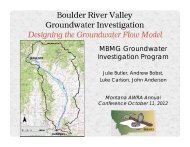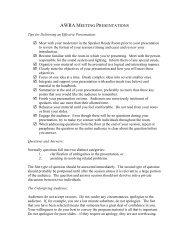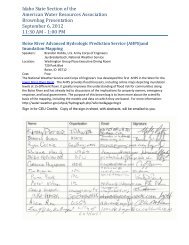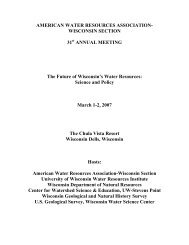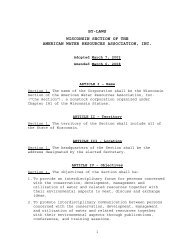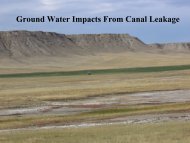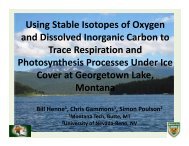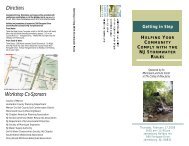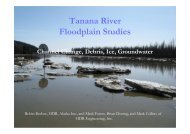Wisconsin's Role in Great Lakes Restoration - American Water ...
Wisconsin's Role in Great Lakes Restoration - American Water ...
Wisconsin's Role in Great Lakes Restoration - American Water ...
Create successful ePaper yourself
Turn your PDF publications into a flip-book with our unique Google optimized e-Paper software.
Predict<strong>in</strong>g Wetland Plant Composition Based on Soil Moisture Regime Us<strong>in</strong>g a Quasi-<br />
3D Variably-Saturated Groundwater Flow Model<br />
**Eric G. Booth, University of Wiscons<strong>in</strong> – Madison, Limnology and Mar<strong>in</strong>e Science, Madison,<br />
WI, egbooth@wisc.edu<br />
Steven P. Loheide II, University of Wiscons<strong>in</strong> – Madison, Department of Civil and<br />
Environmental Eng<strong>in</strong>eer<strong>in</strong>g, Madison, WI, loheide@wisc.edu<br />
The ability to predict vegetation composition based on environmental variables can be<br />
powerful for assess<strong>in</strong>g the impacts of land-use change, climate change, or land management<br />
activities on an ecosystem. In wetland ecosystems, the soil water regime is the primary<br />
environmental variable controll<strong>in</strong>g the distribution of vegetation. Previous studies have used<br />
observed and simulated depth-to-water-table as a proxy of the soil water regime to predict<br />
vegetation composition. However, depth-to-water-table may not be an effective <strong>in</strong>dicator of<br />
the soil water regime at some sites due to several factors <strong>in</strong>clud<strong>in</strong>g strong vertical hydraulic<br />
gradients and deep water table. In these cases, soil moisture may be more effective for<br />
develop<strong>in</strong>g regime metrics as predictors of plant composition.<br />
We have developed a methodology that l<strong>in</strong>ks a quasi-3D, variably-saturated, groundwater<br />
flow model with a statistical vegetation model to predict the probability of presence of several<br />
dom<strong>in</strong>ant plant species across a recently-restored floodpla<strong>in</strong> wetland near Barneveld, WI. The<br />
hydrologic model was created us<strong>in</strong>g a general-purpose, f<strong>in</strong>ite-element software (COMSOL)<br />
and consists of a 2-D conf<strong>in</strong>ed saturated groundwater flow model l<strong>in</strong>ked with a 1-D variablysaturated<br />
groundwater flow model. The statistical vegetation model then uses several<br />
simulated soil moisture regime metrics (e.g., mean grow<strong>in</strong>g season soil moisture at 25 cm<br />
depth) as predictors <strong>in</strong> a non-parametric regression model us<strong>in</strong>g the software HyperNiche 2.<br />
This model<strong>in</strong>g framework produces predictive maps of vegetation distribution and provides<br />
the ability to assess potential climate and land-use change scenarios.<br />
** Graduate student presentation<br />
59






